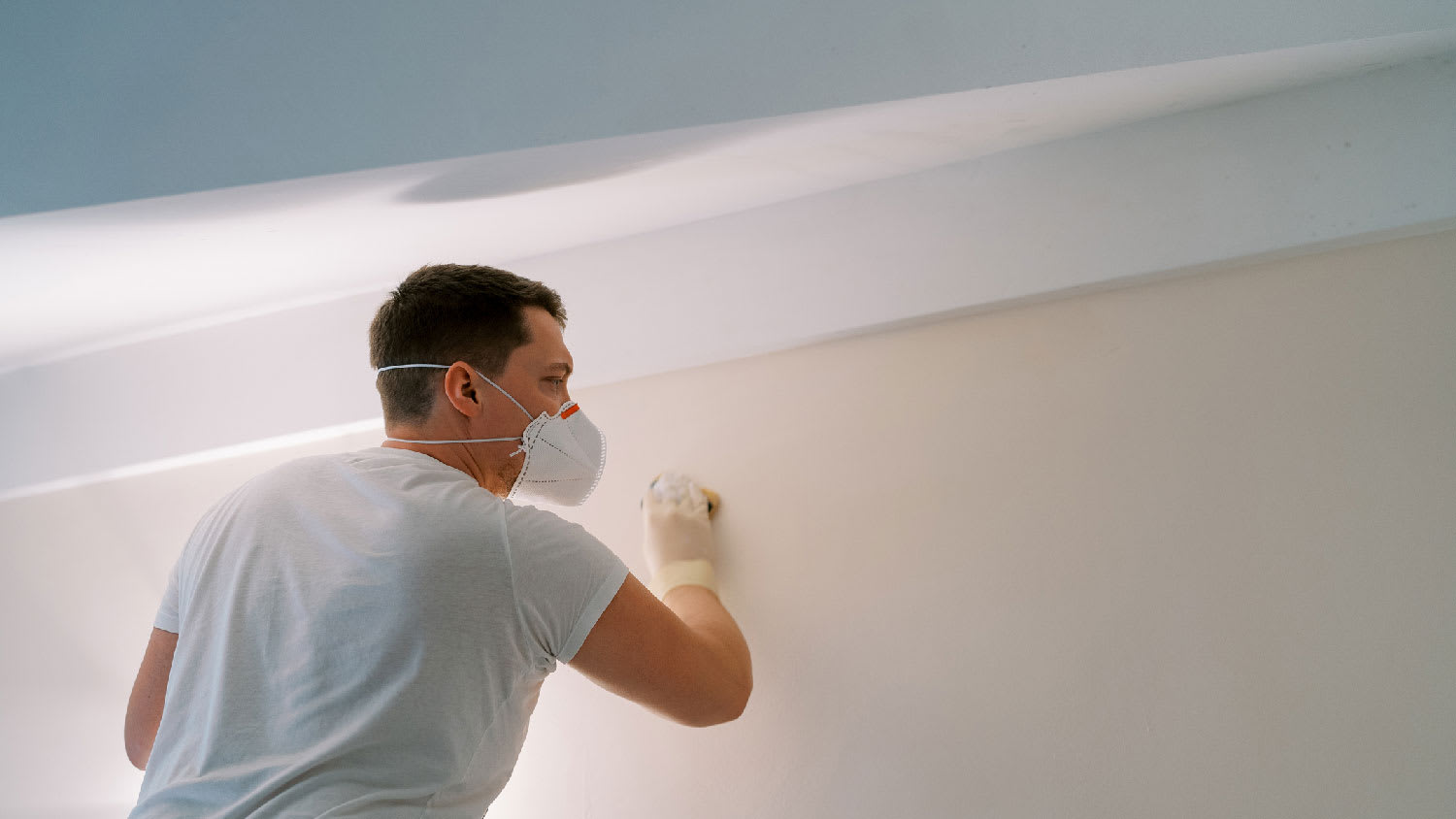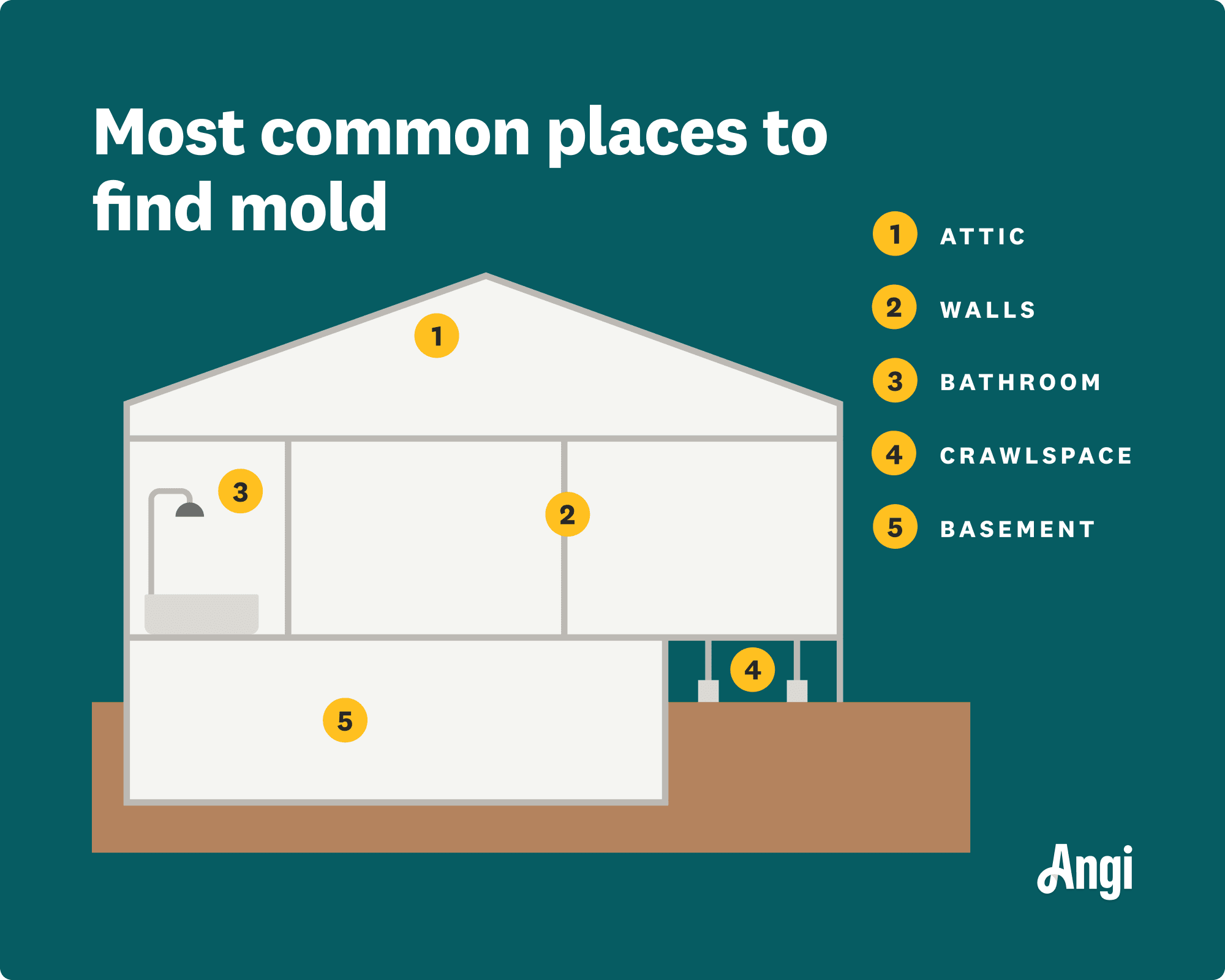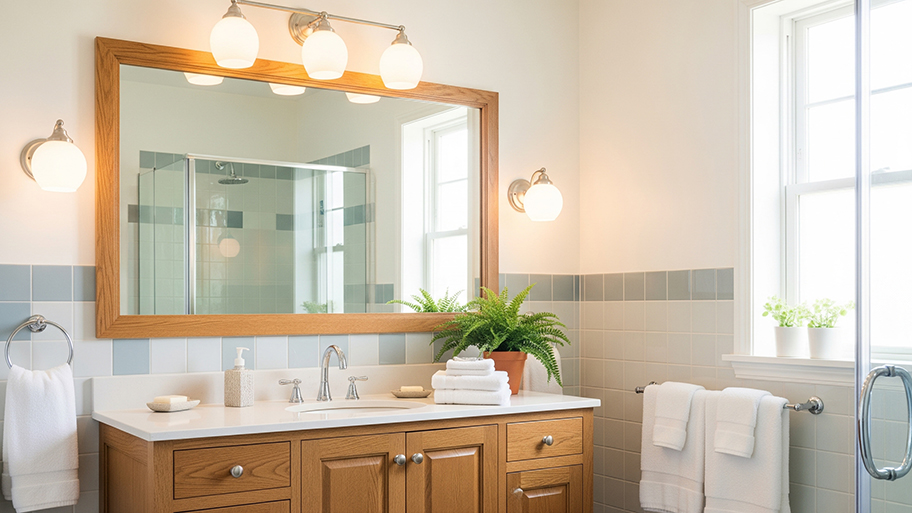
The cost of a mold inspection might seem high, but it’s one of the best investments you can make for your health and home. Read on to learn cost-saving tips.
Mold remediation costs in Indianapolis, IN cost $1,999 on average, but it can cost between $1,026 and $3,005, depending on location, type, and size of infestation.


The type of mold, its location, and the size of the infestation are the primary factors that affect mold remediation costs in Indianapolis.
The presence of mold can decrease the value of your home by 20% to 37%, which is why immediate remediation is necessary.
Consider scheduling annual inspections or treatments to prevent mold growth in your Indianapolis home.
Indianapolis homeowners should stay alert for signs of mold growth, especially during the city’s humid summers. You can expect mold remediation in Indianapolis to cost $1,999 on average, with most projects costing between $1,026 to $3,005. Take professional action with mold remediation services quickly—starting with a closer look at your budget.
Start with a professional mold inspection to determine the scope of the problem. When the pro finishes with that step, they’ll be able to provide a more accurate cost estimate of mold remediation for your Indianapolis property.

It costs more to remove mold from certain areas of your home than others. For instance, mold growth in hard-to-reach areas, like in your HVAC system or drywall, can require more time and materials to remove than mold in very accessible areas, driving up costs.
| Location | Average Remediation Cost |
|---|---|
| Attic | $1,000–$4,000 |
| Basement | $500–$3,000 |
| Crawl space | $500–$2,000 |
| Wall | $1,000–$20,000 |
| HVAC systems | $3,000–$10,000 |
| Bathroom | $500–$1,000 |
| Whole house | $10,000–$30,000 |
Most mold removal professionals charge $10 to $25 per square foot. So, if you're removing mold from a 100-square-foot area, you can expect to pay around $1,000 to $2,500. But factors like where the growth is and the mold type can affect how much it costs to remove it.
Mold inspection costs between $300 and $1,075. Mold testing is key to determining whether you have the presence of mold in your home, plus the extent of the infestation. You’ll need to hire a mold inspector to test surface samples in your home before moving forward with remediation.
Regardless of how it affects remediation costs, you need to know which type of mold you have in your home for your safety. That said, if a mold test reveals the presence of black mold, your mold remediation pro will likely charge more to remove it based on the additional cost of protective equipment.
| Type of Mold | Description |
|---|---|
| Alternaria | A common mold found outside in spring and summer, it primarily attacks plants. |
| Aspergillus | White fuzz that turns black over time, but it can also be brown, yellow, and green. It can cause respiratory illness and requires immediate remediation. |
| Aureobasidium | Grows on painted surfaces and behind wallpaper. It’s often pink and causes allergies. |
| Chaetomium | Extremely toxic and can cause brain infections and various cancers. A white fuzz that turns to blue or green. Requires immediate professional removal. |
| Cladosporium | Commonly found in basements and HVAC systems. It can cause mild allergy symptoms. |
| Fusarium | One of the most toxic molds; requires professional removal once discovered. Often caused by water leaks, it is commonly found in walls and floors. |
| Penicillium | Blue-green and grows in areas of elevated moisture where water damage has occurred. It can be very dangerous. |
| Serpula lacrymans | Causes severe damage to wood and spreads fast. Unfortunately, this mold is usually found after it has spread widely. |
| Stachybotrys chartarum (black mold) | Extremely dangerous, not to mention fast-spreading. Requires immediate removal by a professional. |
| Trichoderma | Grows rapidly in wood, plants, and soil. Commonly found in HVAC systems and not as widely discovered as others in this list. |
| Ulocladium | A dark-colored mold found near windows and in kitchens and basements. Looks like black mold, but it isn’t as toxic to humans. Nevertheless, it still requires removal. |
If left untreated, mold can damage your drywall, carpeting, and flooring. Replacing or repairing your walls or floors will add costs to the removal.
Here are some cost estimates for different types of mold damage repairs in Indianapolis, IN:
| Repair Type | Average Cost |
|---|---|
| Drywall | $1,000–$2,900 |
| Carpet | $775–$2,600 |
| Flooring | $200–$550 |
Mold remediation is a complete solution to handle large, ongoing problems. But when it’s done, you’ll need to install measures to ensure it doesn’t return. DIY mold prevention steps include:
Drying standing water immediately
Improve kitchen and bathroom ventilation
Use cleaning products that target mold growth
Choose mold-resistant materials
Repairing interior and exterior leaks
Improving drainage system
However, some preventative projects require hiring additional pros. For example, you’ll need to hire a local plumber to repair interior and exterior leaks or improve your drainage system, while a local HVAC professional is necessary to replace venting or install a whole-home dehumidifier. Consult your Indianapolis mold remediation pro for recommendations for additional pros.
The Environmental Protection Agency (EPA) recommends only removing mold yourself if it covers less than 10 square feet. Otherwise, it's best to call a local mold removal service. Even if the mold looks like it only covers a small area, you should always call a pro to inspect it to ensure there isn't additional mold hiding behind walls or floors and to determine how harmful it is.
Hire a contractor with specific certification in mold remediation—a process that includes identification, cleanup, removal of infected materials, and eventually signing off a completed project. Hourly rates vary, but you can expect to pay $50 to $100 per hour for highly specialized mold services in Indianapolis.
Once the mold remediation crew is done, you’re likely to be left with several materials to replace. Expect to arrange repair work with an experienced contractor to get your home looking its best.
Hire a drywall contractor to replace drywall: $1,000–$3,200
Hire a carpet installer to replace carpet: $3–$11 per square foot
Hire a plumber to fix leaks: $45–$200 per hour
Mold remediation is not a service that adds value to a home, although it can restore value that a home has lost. A home with a serious mold problem is difficult to sell due to health hazards and structural damage. As a result, mold remediation is often one the first steps in preparing a house for sale.
In fact, mold issues can decrease your home value by 20% to 37%, due to safety concerns and increased likelihood of plumbing or structural problems. To add value to the property, consider following up the mold remediation with upgrades to the space that yield higher ROI.
Home is the most important place on earth, which is why Angi has helped more than 150 million homeowners transform their houses into homes they adore. To help homeowners with their next project, Angi provides readers with the most accurate cost data and upholds strict editorial standards. We survey real Angi customers about their project costs to develop the pricing data you see, so you can make the best decisions for you and your home. We pair this data with research from reputable sources, including the U.S. Bureau of Labor Statistics, academic journals, market studies, and interviews with industry experts—all to ensure our prices reflect real-world projects.
Want to help us improve our cost data? Send us a recent project quote to [email protected]. Quotes and personal information will not be shared publicly.
From average costs to expert advice, get all the answers you need to get your job done.

The cost of a mold inspection might seem high, but it’s one of the best investments you can make for your health and home. Read on to learn cost-saving tips.

Mold is an unwelcome bathroom guest many homeowners deal with. Discover how to get rid of mold in a bathroom with these five DIY solutions.

Mold is a serious health hazard and, unfortunately, difficult to detect in your home. Use this guide to help determine if hidden mold is making you sick.

If your house smells musty but there’s no visible mold, check anywhere there’s moisture. Use this guide to help you identify and prevent the smell in your home.

When it comes to identifying the differences between dust vs. mold, on paper it looks simple. Learn why differentiating between the two isn’t always so simple.

What does black mold look like? It has a dark color and may appear slightly fuzzy. Use this guide to learn about the variations in black mold’s appearance.